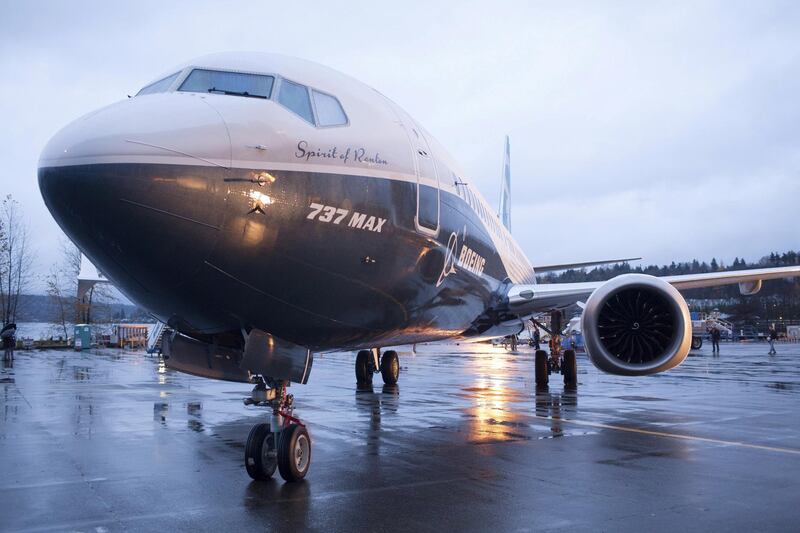At least three airlines have conducted inspections on the grounded Boeing 737 Max concerning an issue that could damage some engine parts.
The possible buildup of carbon around fuel nozzles prompted manufacturer CFM International to recommend that some operators examine and potentially replace those components of the Leap-1B models used on the Max. American Airlines and Southwest Airlines, the two biggest USoperators of the new jet, and Canada’s WestJet Airlines Ltd. have been affected.
“We are monitoring the sub-fleet and we are taking the appropriate actions in conjunction with the customer anytime we think that an engine needs to have the nozzle replaced,” CFM chief executive officer Gael Meheust told reporters Thursday following an appearance at the Wings Club in New York. Often, the checks don’t require additional work, he said.
While only a small fraction of the engines have been affected, the checks add to the challenges for operators of the 737 Max, Boeing’s top-selling model and a workhorse of the global aviation fleet. The plane has been grounded for more than a month after two fatal crashes that killed a total of 346 people. The engine issue isn’t related to those disasters.
American Air said CFM asked it to conduct borescope inspections on three Max engines -- a precautionary measure that revealed no problems. That came after CFM recommended that Southwest examine a dozen engines. The results were forwarded to the engine maker, and Southwest hasn’t said whether it found any issues.
WestJet, Canada’s second-largest carrier, was asked to inspect five of its 13 Max aircraft and found no issues, spokeswoman Morgan Bell said. United wasn’t contacted about the engines on its 14 Max aircraft. Air Canada didn’t respond to a request for comment.
Southwest is the largest US operator of the Max, with 34 of the planes, while American has 24.
“There’s nothing new about” carbon buildup in engines, Southwest CEO Gary Kelly said at an event in Dallas. “It’s not unusual to have a brand new engine and have learnings that need to be addressed.”
Mr Meheust echoed that sentiment, saying the buildup, known as coking, is a “minor” issue that shouldn’t detract from the broadly successful introduction of the engine. CFM is “not in the mindset of redesigning” any parts as a result of the snag.
CFM, a joint venture of General Electric and Safran, hasn’t issued any directives for the full Max fleet, according to a statement. The manufacturer said it’s working with customers during the grounding to make sure the engines are ready for a smooth return to service once the Max is cleared to fly.
The coking issue can lead to engine damage if left unaddressed. It’s being investigated as a possible factor in an engine malfunction that forced a Southwest Max to make an emergency landing last month, according to a person familiar with the matter, who asked not to be named because the results haven’t been disclosed. The plane was able to return to the airport in Orlando, Florida, shortly after taking off.
The jet was headed to Victorville, California, for storage and had no passengers. It’s too early to determine the cause of that incident, Southwest said.
Operators of the Max have been notified of the issue, which was discovered more than a year ago. Inspections are happening on a case-by-case basis determined by engine data. The issue has affected less than 1 percent of the total fleet of Leap engines, said the person.
Max aircraft were grounded worldwide following the crashes of an Ethiopian Airlines plane in March, the second disaster in five months involving Boeing’s best-selling jet, which debuted less than two years ago. In both cases, a stall-prevention system caused the planes’ noses to lower, confusing the pilots.
Boeing is crafting a software upgrade that would make the system less aggressive and prevent it from making the repeated nose-down commands seen in the crashes. In addition, the system would no longer be triggered by a single erroneous sensor reading.
A board of pilot experts appointed by the U.S. Federal Aviation Administration concluded this week that pilots won’t need additional simulator training once the plane is returned to service. By contrast, Canada’s transport minister said he favored requiring new simulator training for pilots.







